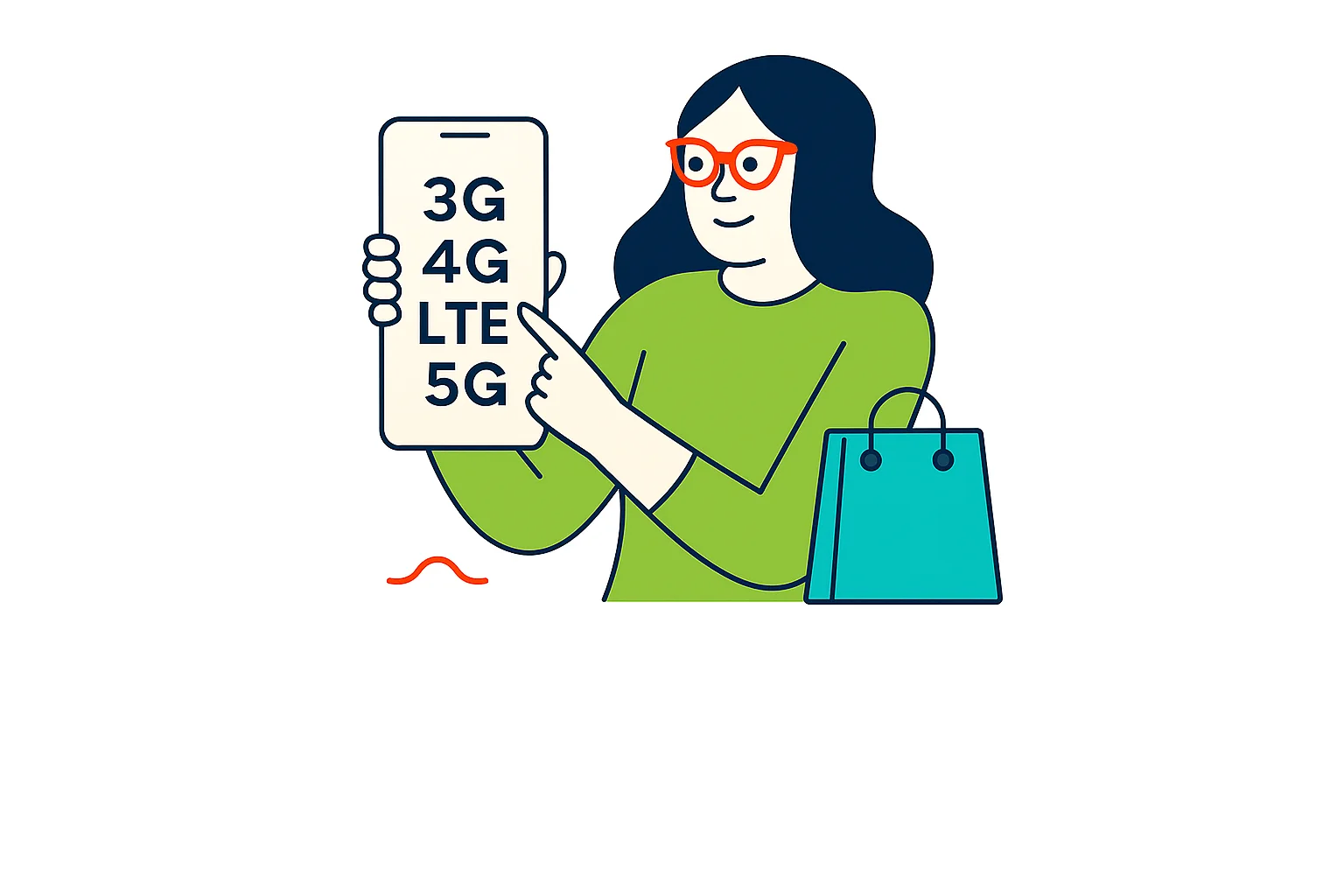Network Types Explained: 3G, 4G, LTE, 5G vs. 6G - What It Means for You

From 3G to 6G: The Evolution of Wireless Networks
Wireless technology has come a long way, transforming how we connect, stream, work, and play. But with so many network types i.e. 3G, 4G, LTE, 5G, and the upcoming 6G, it’s easy to get confused about what they mean and how they impact your daily experience.
This guide will break it down in simple terms, so you can understand what each network does and how it affects your phone’s performance.
3G: The Dawn of Mobile Internet
- Best for: Basic browsing, emails, and light app usage
- Speed: 1 to 3 Mbps
- Availability: Limited, as networks phase it out
3G was a game-changer when it first launched, introducing mobile internet access beyond just calling and texting. It allowed users to browse websites, send emails, and use early apps, but it’s slow by today’s standards.
What It Means for You: Most major carriers in Canada are shutting down 3G networks to free up space for 4G and 5G. If you still use a very old phone, you may need an upgrade.
4G & LTE: The Era of Speed & Streaming
- Best for: Streaming HD video, gaming, video calls
- Speed: 10 to 100 Mbps
- Availability: Widespread coverage across Canada
4G introduced fast internet speeds and smooth streaming, making it possible to watch Netflix, YouTube, and TikTok without constant buffering.
But wait - what about LTE?
- LTE (Long-Term Evolution) is a version of 4G with faster speeds and lower latency.
- Some providers marketed LTE as "4G LTE", but in reality, it was a step toward true 4G speeds.
What It Means for You: If your phone supports 4G or LTE, you’re in good shape. You’ll get solid speeds for most tasks, and many budget friendly plans still prioritize 4G LTE over 5G.
5G: The Future is Here
- Best for: Ultra fast downloads, cloud gaming, AR/VR experiences
- Speed: 100 Mbps to 10 Gbps (potentially 100x faster than 4G)
- Availability: Expanding across Canada, strongest in urban areas
5G is designed for blazing-fast speeds and low latency, meaning less lag in online gaming, faster downloads, and smoother video calls.
Types of 5G:
- Low-Band 5G: Slower than true 5G but has a wider coverage area (better for rural areas).
- Mid-Band 5G: A balance between speed and range (most common in cities).
- High-Band 5G (mmWave): Super-fast, but works best in crowded places like stadiums and urban centers.
What It Means for You: If you have a 5G phone and live in a city, you’ll benefit from higher speeds. However, if you’re in rural areas, 4G LTE might still be more reliable.
6G: What’s Coming Next?
- Best for: AI-powered services, holograms, next-gen IoT
- Speed: 100x faster than 5G (Expected speeds: 100 Gbps+)
- Availability: Still in research, expected by 2030
6G is still in development, but experts predict it will bring:
- AI-powered networks that adjust in real-time based on usage.
- Holographic calls (think sci-fi style video chats).
- Instantaneous downloads, making large files download in milliseconds.
- Smarter IoT (Internet of Things), connecting more devices seamlessly.
What It Means for You: While 6G is still years away, expect even smarter, faster, and more interactive experiences in the next decade.
Which Network Should You Use?
Final Thoughts: What Does This Mean for You?
- Still on 3G? It’s time to upgrade as carriers are shutting it down.
- Using 4G LTE? You’re still getting great speeds for most tasks.
- Have a 5G phone? Enjoy faster connections, especially in cities.
- Waiting for 6G? We’ve got a few more years before it changes the game.
Want the best plan for your needs? Compare wireless plans with Fliq today and get the fastest network at the best price on your terms!
